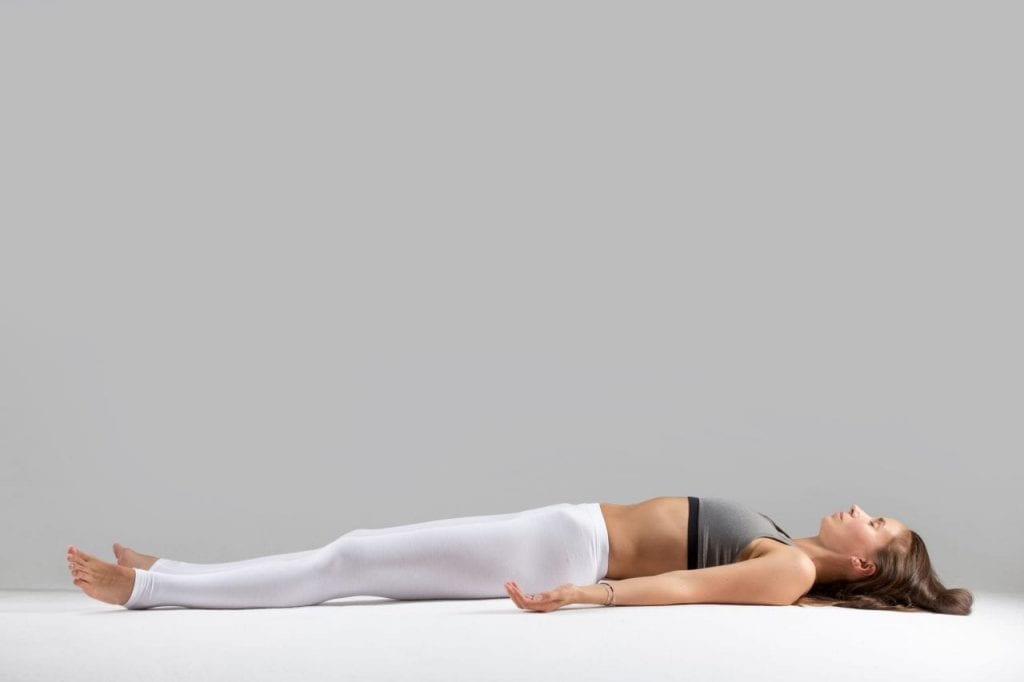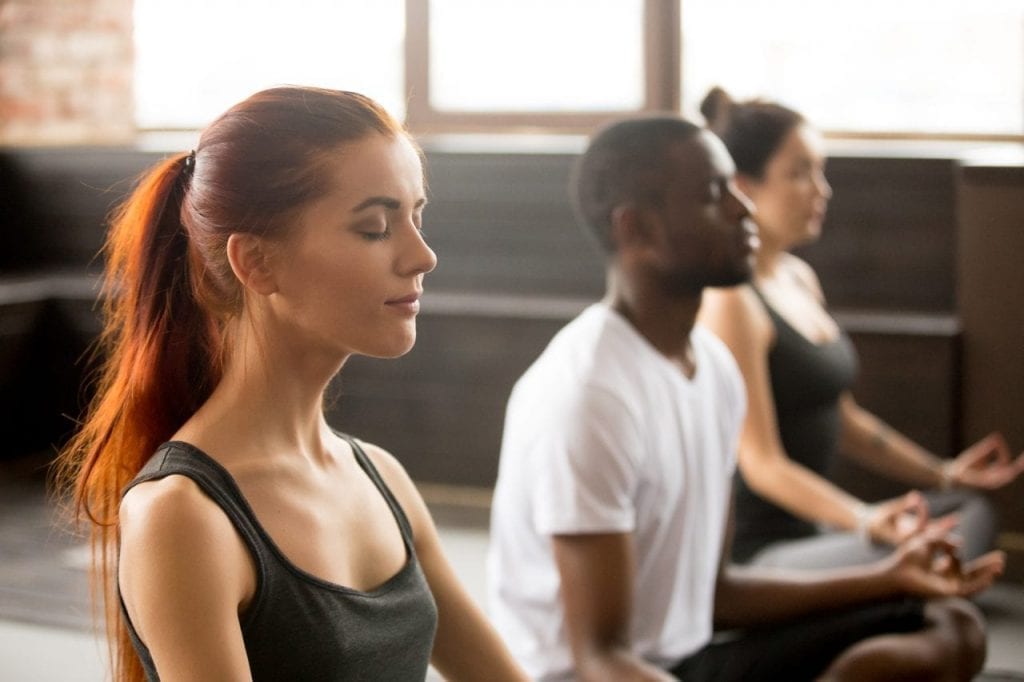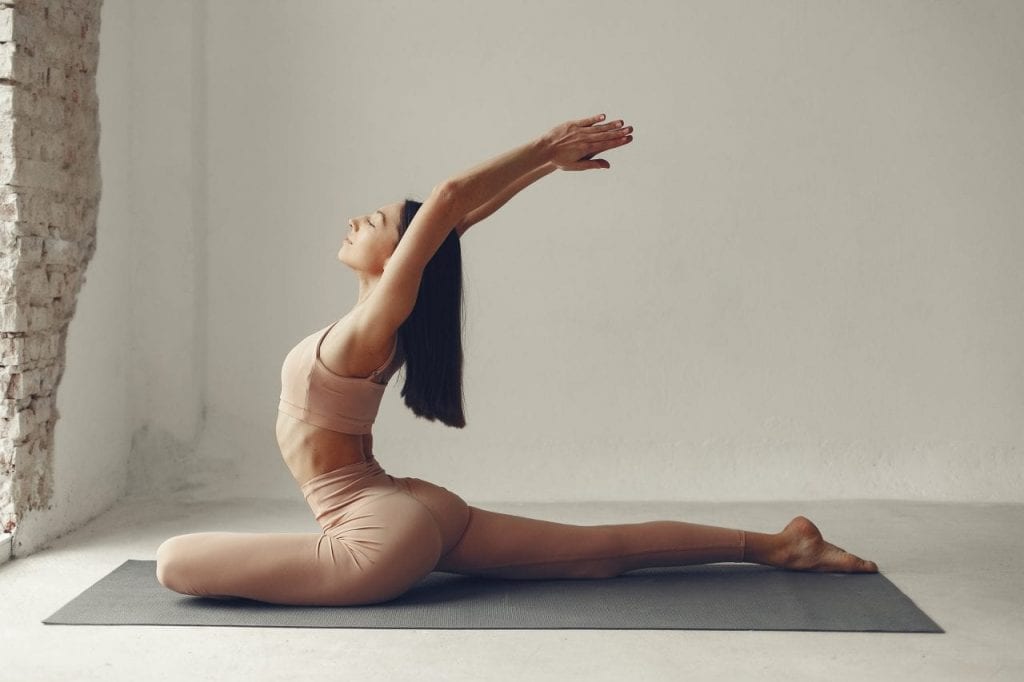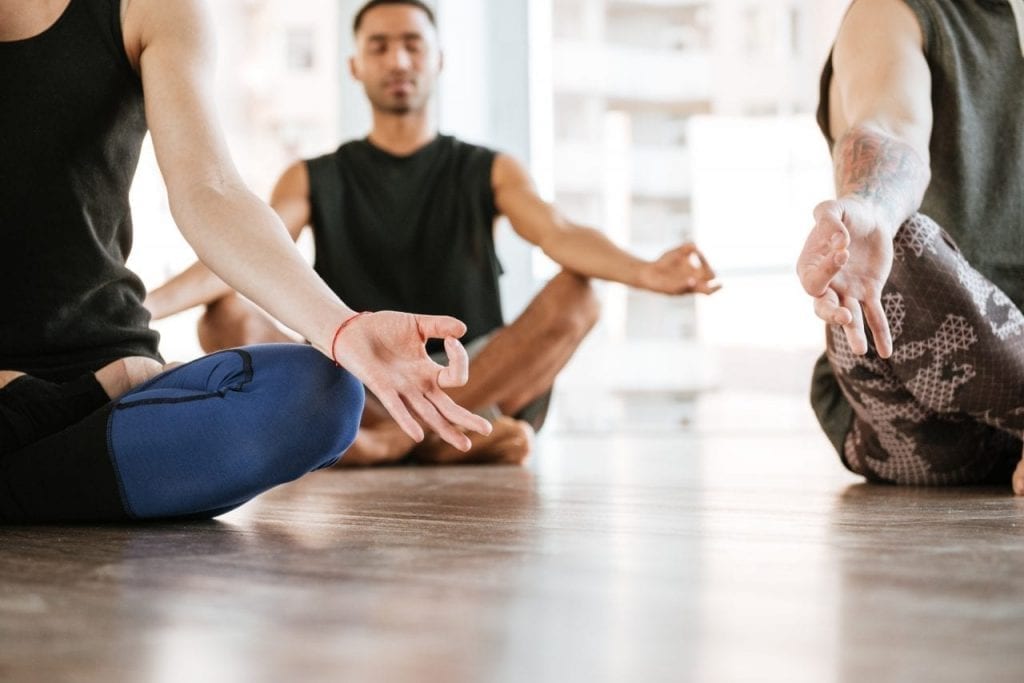Restorative yoga helps you slow down and open up through stretching. When you take a restorative lesson, you will hardly move, and will only practice a few positions. It is an activity entirely different from most traditional yoga.
Usually, a Restorative yoga sequence includes only five or six poses, assisted by props, which will allow you to relax completely, the poses should be held for 5 minutes or longer and will involve light twists, seated folds, and gentle backbends.
You can get tremendous benefits for both mind and body by practicing Restorative Yoga. Usually, If we have a life that is going at a fast pace, and we also practice a type of dynamic yoga or other high-intensity exercises, then we can get over-stimulated, we can feel exhausted and tired. After a while, our nervous systems suffer. The benefit of Restorative Yoga is that we’re not going to work out muscles. Sometimes we assume that we have to work to improve our flexibility, but in reality, we can achieve more flexibility by softening and relaxing than by pushing our body through hard exercise (3).
How does Restorative Yoga work?
The props used in Restorative Yoga help you hold your poses for longer with full support, this will relax you profoundly.
The practice focuses primarily on physical, mental, and emotional stimulation by relaxing in poses, with the help of props without stress or discomfort. Restorative Yoga classes are very easy and slow. Props, such as blocks, bolts, blankets, and braces are used to hold you safely in your position. You then keep your position for a long time. This practice is perfect for juggling an active Yoga program or taking a break when you don’t feel your best.
When we relax in poses that encourage a calming response and decreasing tension in our bodies, our parasympathetic nervous system is stimulated. The parasympathetic nervous system is responsible for slowing the rhythm and respiration of your heart rate among other things (4).
What are the benefits of Restorative Yoga?
The physical and mental effects of daily stress can be eased through the practice of Restorative Yoga, breathing exercises, and restful poses that can quickly cure common ailments such as headaches, backaches, anxiety, depression, and insomnia.
What makes this style of yoga different from the others is the approach, we still stretch but with the help of the props, we are encouraged to relax fully, relieve stress, and concentrate on our breath. In this way, we can activate the parasympathetic nervous system, which will help us feel more at ease. As we relax, we can let our bodies get more in contact with our natural qualities like kindness and compassion (4).
Here are some of the general benefits you will get while practicing Restorative Yoga:
- Better rest and sleep
- Deeply relaxes your body
- Boosts the immune system;
- Develops the virtues of kindness and understanding towards others and towards self.
- Improves healing and balancing power
- Releases muscle tension, increase mobility and flexibility
- Balances the nervous system
Let us explain in more detail, the benefits of Restorative Yoga:
1. Mindfulness
A lot of awareness of the self and the body needs when practicing, so much that we could call Restorative Yoga the “mindful yoga.” Slower moves offer space for a more profound experience of poses and breathing exercises. The Knowledge of the physical feelings, ideas, emotions, or sounds in the atmosphere can all be far deeper into the Restorative’s practice. You can see and feel the world more profoundly through your yoga experience.
2. Self-awareness and introspection
A Restorative Yoga class usually helps you to draw attention to yourself and ignore all the external world events and situations. The practice becomes a refuge for the spirit and the mind with your inner consciousness, from which you can look deeply at who you are, what you desire, and how you can help the world. It opens you to new levels of self-exploration and contemplation which will allow you to shine.
3. Connects you to the divine
Yoga’s ultimate objective is union with the Divine. Your practice should therefore be a way to achieve this purpose. Restorative Yoga is the best way to communicate with the divinity within yourself. Through the practices, you awaken grace, equilibrium, flexibility, balance, strength, and awareness of the moment. All this together provides a mind and body ideal for the seamless convergence to a pure being.
4. Deliberateness of action
You become more aware of your actions or karmas and how they influence your level of comfort or discomfort. You can see the cause and effect reaction of your poses, respiration, and general well-being. As you keep practicing Restorative Yoga you will make better choices while practicing and in your daily life.
5. Slows down the pace of life
Restorative Yoga is a great opportunity to distance yourself from the hectic everyday routine and let your speedster come back to zero. It gives you a break from all life turmoil and it helps you prepare the mind and the body for meditation and deeper consciousness. As you slowly move through your poses, you can calmly explore your mind and body at your own pace.
6. Encourages transcendence
Many forms of Hatha yoga are seen as precursors to prolonged meditation periods. Through your practice, muscles, joints, and subtle energy centers will be stimulated to make meditation more profound and comfortable. Yoga in itself often leads to a transcendental experience of deeper unity with the universal level of consciousness. Every pose and breath leads you to the extended ladder of consciousness. As the practice grows, the yoga vehicle will take you from the wakefulness into the silent space between your thoughts, this is a space from where you can glimpse the soul and awaken the Divinity within you.
7. Calming for the nervous system
In a Restorative Yoga class, you will have a slower pace and deeper breathing, this will activate the parasympathetic nervous system. This activation helps to mitigate the impact on your body and well-being of a normal fight-off stress response. The calming effect on the nervous system provides a profoundly relaxing tone for the class, which will comfort your mind, body, and nervous system.
8. You will feel secure
It’s easy to become insecure in today’s life. A lot of people spend their days in the midst of terror, anxiety, and insecurity. What this type of yoga offers you is a safe harbor where you can reconnect with your everlasting, invincible, pure, and nurturing essence. Achieving that relation through your poses, your breathing, and your profound relaxation restores your memory of who you are and helps you regain your fearless spirit.
9. Body awareness
While practicing Restorative Yoga you will have a deeper understanding of your own body, it will help you understand what a spiritual being having a human experience is all about. Sadly, sometimes we are not very intimate with our own bodies. However, a Restorative Yoga practice can help you achieve this intimacy. We can reach new levels of body strength, and a higher sense of self-love and acceptance can emerge.
10. Acceptance and detachment
Restorative Yoga believes that you will get the greatest advantage from your practice not by pushing yourself into a pose, but by leaving it and not trying harder. This attitude promotes the acceptability and limits of the body. It also improves your ability to let go of misconceptions about your body. When your comfort and convenience are enhanced, your yoga practice will eventually result in acceptance and detachment.
7 tips to take your Restorative Yoga practice to the next level
It doesn’t matter if you are getting started or you are already a pro, there are always little tips and tricks that can help you in your practice, listed below you will find 7 of them (7):
1. Prepare your space
You can feel more relaxed if the environment where you train is as calm as possible. A room that is clean, smooth, and warm will invite you to feel more relaxed, and concentrate better. Here are some props that should have like, folded blankets, rolled towels, and pillows all placed around your mat.
2. Warm-up
Right before you start with your Restorative poses, you should warm up mildly with gentle rhythmic movements. This typically includes respiratory slow flows such as Cat-Cow and easy half Sun salutations, as well as low lunges, and hip openers. Warming up offers a chance to shed any restlessness from the body and mind, making it easier to calm down in silence. It also helps to make your muscles stronger, encourages you to breathe more deeply and freely, and it draws your attention to the body. Students often like to repeat some warm-up motions as they move between positions.
3. Stay warm
Due to the fact that Restorative Yoga requires you to stay still for long periods of time, you could get cold throughout the session, so use layers when you dress, keep your socks on, and maybe have a blanket close by, just in case.
Timing is key
In this practice, time is critical. You need to let the brain be aware that you’re healthy enough to turn off your stress response, your mind and body should be at ease and your breath should be full and deep for about 20 minutes. Restorative poses will typically take from 5-20 minutes or more. It is tough to stay in the same pose, but the more you practice, the easier it will be. Repeated practice will allow you to relax quicker and easier over time.
4. Listen to music
Some people love to listen to music while practicing, and some others can’t seem to concentrate on it. Choose a type of music that doesn’t require you to listen to it, Restorative Yoga is a meditative experience, that allows you to concentrate on yourself and look within, so you don’t need music getting on the way, depending on what you like you can listen to lower or higher sounds, it all depends on you, just make sure that the music you choose is non-invasive.
4. Stay still and let your breath flow
This practice provides good alignment that allows the airflow freely. As you learn to rest and remain on the ground, you make space for the air to flow through. Deep, natural breathing sends signals to your brain that you are healthy, which increases rest and healing.
5. Keep it simple
Plan your routine before your start, and place the props that you’ll need close to you, and try to use the same ones for all the exercises, in this way you concentrate better and won’t get distracted. It is better to practice 2 poses and dedicate them the time and effort they need, than doing dozens and not doing them properly.
Restorative Yoga is a practice in which the long holds, the breathing, and the postures help the body reach the point of relaxation. It is usually practiced with props that can support your body through the exercises, this support will allow you to feel free and relaxed.
This practice is a great alternative to all those active yoga classes, or exercises, the stillness, and breathing techniques allow you to connect with your inner self and reach a whole new level. In this hectic life, it is good to stop remain still, and reconnect with your mind and body (8).
Contents








